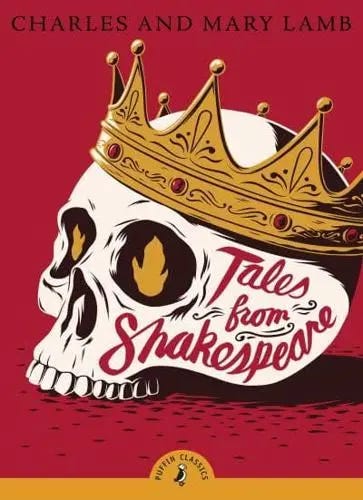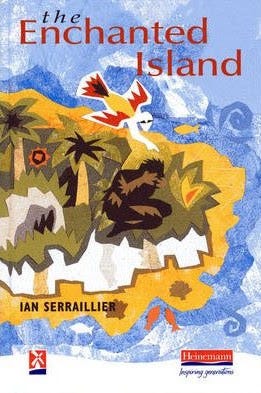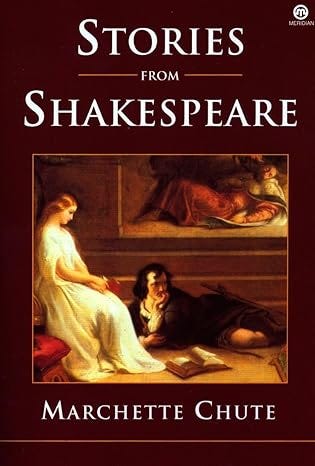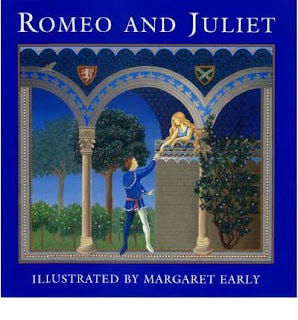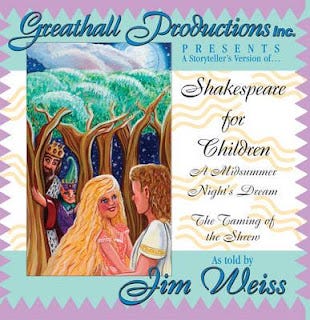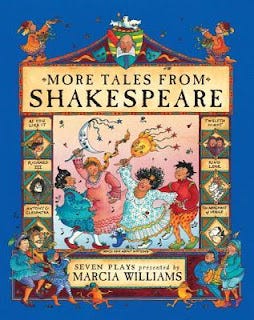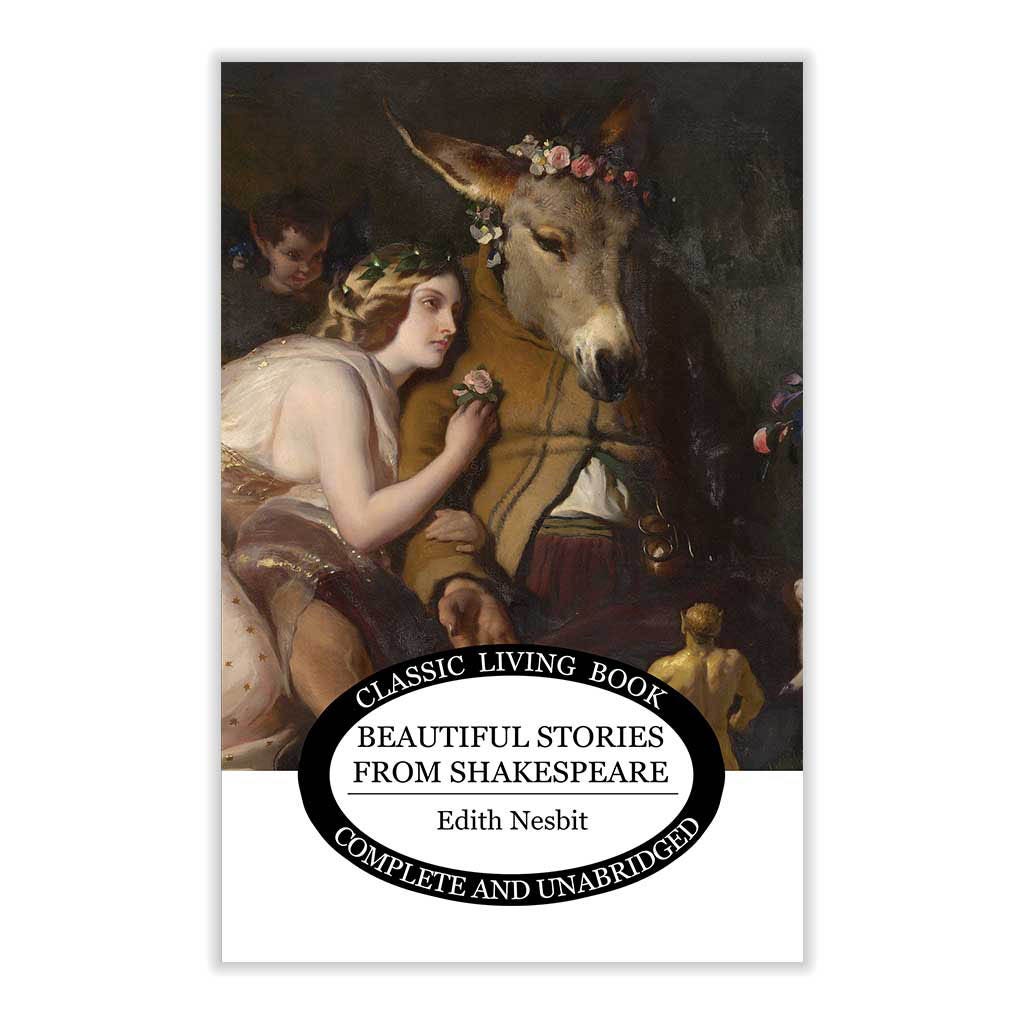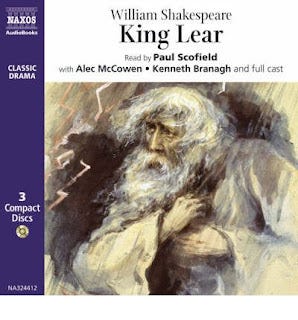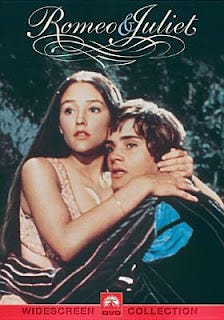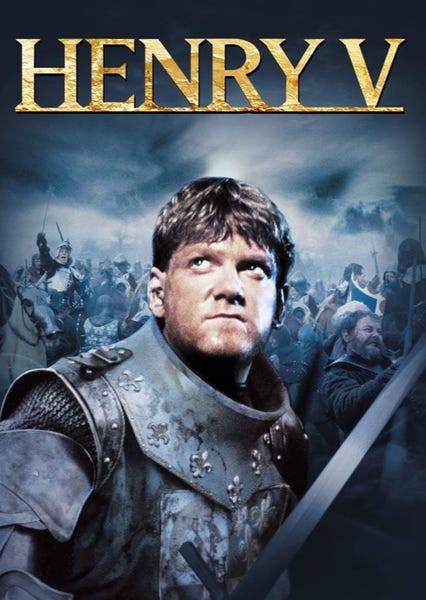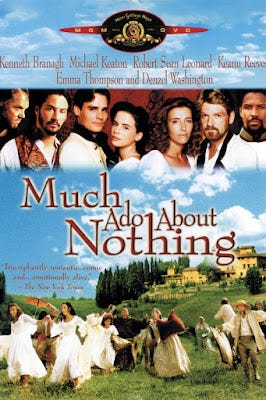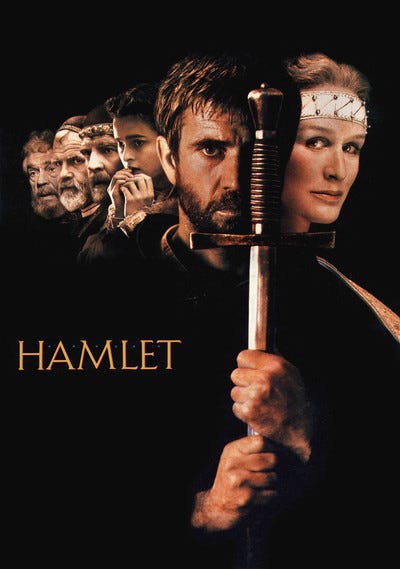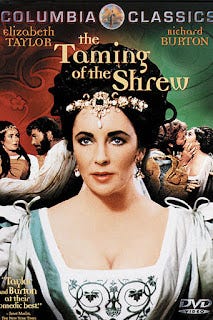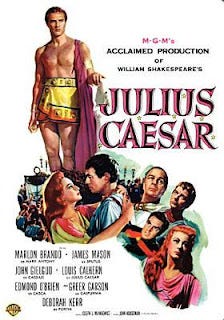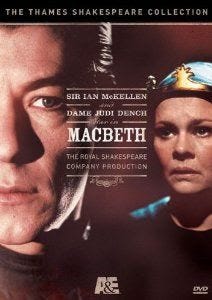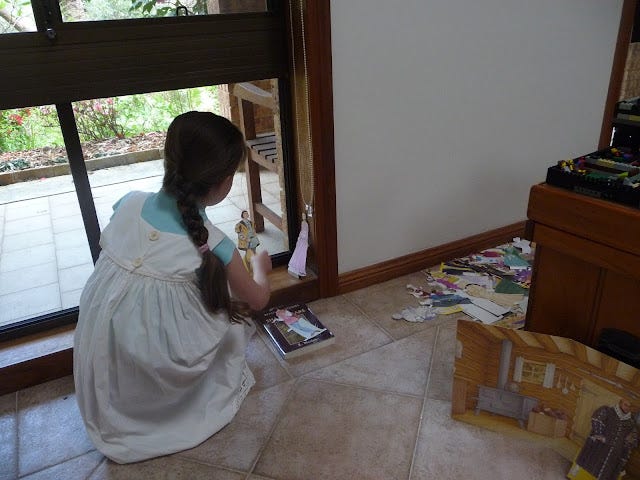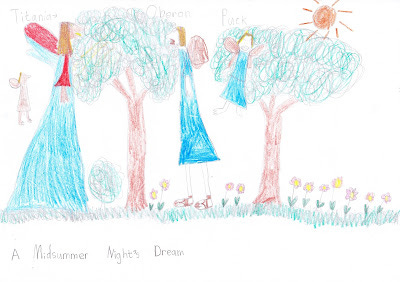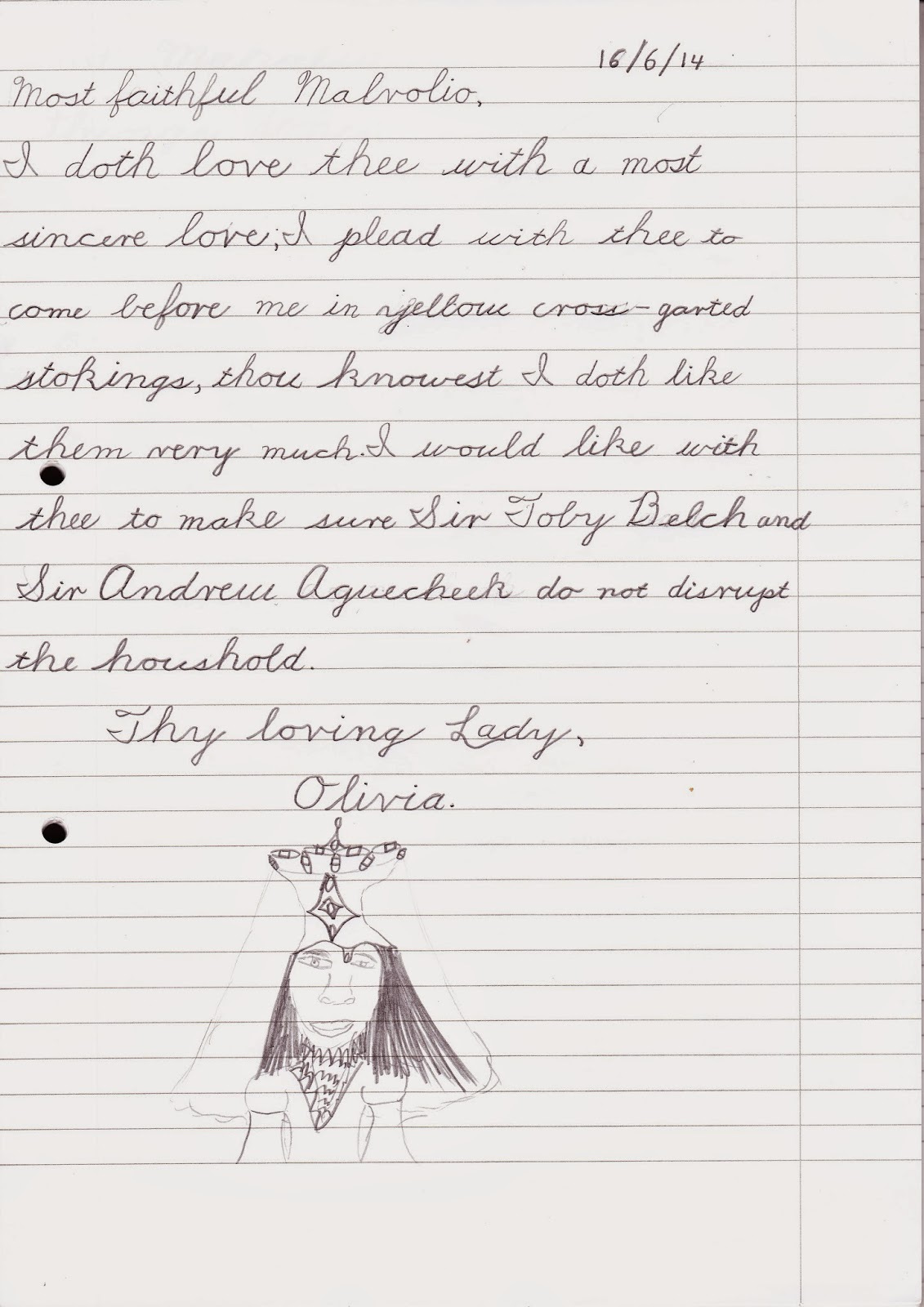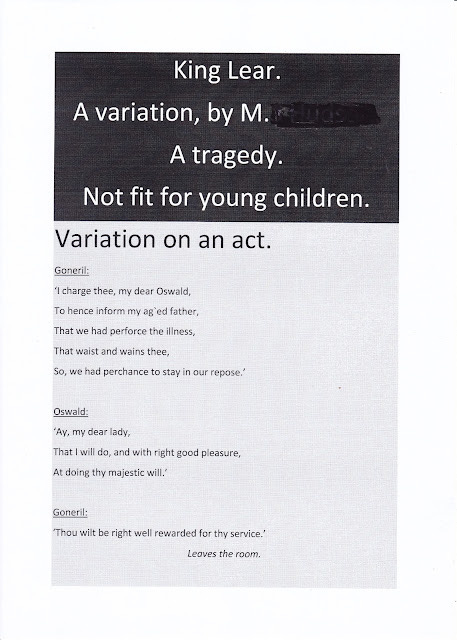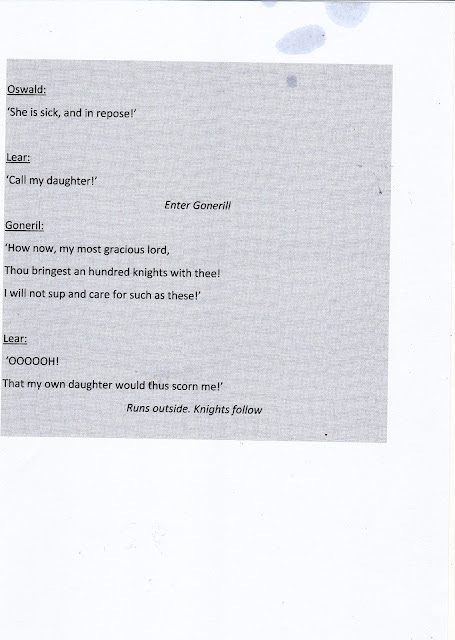Inspired by Shakespeare #2
How I spread the feast that is Shakespeare in a way that both my children and I could partake. ''But a child of ten cannot understand Shakespeare. No; but can a man of fifty?''
Full fathom five thy father lies;
Of his bones are coral made;
Those are pearls that were his eyes:
Nothing of him that doth fade…
Those verses were my first introduction to Shakespeare. I just didn't know it at the time. I was 13 years old and I heard a girl in the year above me at school reciting what I thought was a random poem. The words stuck and stayed with me over the years and then one day I read them with my children in Shakespeare's play, The Tempest, and discovered their origin.
I was a Shakespeare illiterate for a long time and my journey into appreciating Shakespeare didn’t begin until I started homeschooling. A friend gave me a big fat hardback copy of The Complete Works of Shakespeare before I had children, but it sat unread for a decade after I'd decided that I'd never make any sense out of it. I discovered my eldest daughter reading it when she was about nine years old - it turns out that young children can appreciate Shakespeare, just as they are able to appreciate other classic literature by Dickens, Kipling, R.L. Stevenson and others. They just need to be introduced to them.
Getting Started
Although my daughter started with Shakespeare’s original works, most of my other children were introduced to him via re-tellings which I sometimes read aloud or gave to them to read for themselves.
Ambleside Online schedules retellings of specific Shakespeare plays to develop familiarity with the stories and themes in Years 1 to 3 and has a rotation of the actual plays for Years 4 to 12. If you’re starting with older children you could start with the plays or do a quick introduction using a retelling. Because I had a span of ages, my younger kids would join in with the older ones when we read/listened to the plays. I think Charlotte Mason’s idea of setting a feast before our children is apt here.
Re-tellings
Tales from Shakespeare (1807) by Charles & Mary Lamb - this re-telling of twenty stories is readily available & a Kindle version is on Gutenberg. It was the first one we used and is faithful to the original, retaining as much of Shakespeare’s language as possible while leaving out some of the more complex histories and themes.
Tales from Shakespeare...an introduction to the study of Shakespeare, for which purpose his words are used whenever it seemed possible to bring them in;
and in whatever has been added to give them the regular form of a
connected story, diligent care has been taken to select such
words as might least interrupt the effect of the beautiful
English tongue in which he wrote: therefore, words introduced
into our language since his time have been as far as possible
avoided.
The Enchanted Island by Ian Serraillier (the author of the WW2 book, The Silver Sword) is a book of stories from the plays, not of them. He often chooses secondary plot lines to follow which makes for an interesting read that isn't just a repeat of every other book of Shakespeare summaries. Easy to read with engaging language, the eleven stories include Henry V, King Lear, Macbeth and The Tempest. Published in 1966.
Stories From Shakespeare (1959) by Marchette Chute - I have a very battered older copy of this book but it has been re-issued by Penguin. ‘It is not Ms. Chute's purpose to provide a substitute for these immortal comedies, tragedies, and histories; rather she seeks to provide the modern reader with essential insight into Shakespeare's narrative genius, clarifying the intricacies of plot and sharply delineating a host of characters, major and minor alike.’
This is a great book to have on hand before watching a play!
Romeo & Juliet by Margaret Early - lovely illustrations and a good introduction; all ages.
Shakespeare for Children, narrated by Jim Weiss is a fun re-telling of two of Shakespeare's plays. My youngest daughter listened to these over & over for probably a year. They are a great introduction for younger children.
The Animated Shakespeare's The Taming of the Shrew is a good follow up after Shakespeare for Children or just as an introduction to the play for up to age 12 years if there is no familiarity with Shakespeare. There are other plays that have been animated but I've only watched snippets of them, but this one was enjoyable to watch.
Marcia Williams has three books that I know of that re-tell Shakespeare’s plays and they were helpful for a general overview of the plays. They are done well and quite appealing for kids who might struggle with the rich language Shakespeare uses. The language is still used but the plays are (obviously) condensed and done in a comic style. A couple of my boys enjoyed them when they were around 8 to 10 years of age but older children who've had no previous exposure to Shakespeare would probably like them.
'Take your place in the Globe Theatre of Shakespeare's day to see seven of his best-loved plays in performance. Romeo and Juliet, Hamlet, A Midsummer Night's Dream, Macbeth, Julius Caesar, The Winter's Tale and The Tempest are all brought vividly to life in Marcia Williams' gloriously accessible comic-strip versions, which include the bard's own dialogue and the rowdy remarks of the audience.'
We’ve also used Beautiful Stories from Shakespeare for Children by Edith Nesbit. Living Book Press has a range of formats available.
Shakespeare wrote 37 plays and since I added them as part of our regular studies we have read/listened/watched 21 of them:
Coriolanus, Hamlet, Julius Caesar, King Lear, Macbeth, Romeo and Juliet
All's Well That Ends Well, As You Like It, The Comedy of Errors, Measure for Measure, The Merchant of Venice, A Midsummer Night's Dream, Much Ado About Nothing, The Taming of the Shrew, The Tempest, Twelfth Night, The Winter's Tale
Henry V, Henry VIII, Richard II, Richard III
I've read often enough that Shakespeare's plays were meant to be seen, and it did help me to watch some of the movie versions of his plays (and a few stage productions) but I sometimes found them difficult to follow and because of the barriers I encountered, I've tried to use a mixed approach when we study Shakespeare. Here is an idea of how I went about that.
A Mixed Approach
Choose a play - I based this on what resources we had available. If I found a good movie version I used that or if there was a live performance we’d base our choice on that. I’ve generally used audiobooks & followed along with the text of the play. Some Shakespeare guides are often coarse in their sidebar comments and interpret Shakespeare's veiled language more explicitly, so I generally don't give them to my children to use. I like the Oxford School Shakespeare guides as well as some others mostly for their writing & activity ideas etc. We've used both the Arkangel Shakespeare and the Naxos audio versions and the Naxos versions we've used have actually been better than some of the Arkangel versions. Just saying that because Arkangel is usually touted as THE audio version for Shakespeare. Two of our favourites:
I've found it wise to preview all the movies. Even the G-rated versions have unsuitable scenes and previewing them enabled me to fast forward parts without missing much of the story. Live productions can be variable, especially when the plays are given a modern setting. The last Bell Shakespeare production turned me off going to another one, while an amateur production of A Midsummer Night's Dream was a lot of fun and suitable for the whole family.
Movie Versions of Shakespeare
Romeo & Juliet
One of the best productions I've seen is the 1968 movie by Franco Zeffirelli. It is rich and sumptuous and gives an authentic feel for the times. Romeo & Juliet are played by young actors whereas other productions tend to cast older people in the roles and it doesn't work nearly as well. It's more suited to a high school audience but because the settings are so good, I used portions of the movie to give my younger children a feel for the play and the boys loved it because of the fighting. Joseph Pearce is touring Australia this month and I went with some friends to his talk on God’s Love & Great Literature earlier this week and he had some countercultural things to say about Romeo & Juliet in an age that glorifies the heedless and headless heart of young love:
Henry V
Our first introduction to Henry V was with the Laurence Olivier movie, followed by reading the re-telling found in Ian Serraillier's The Enchanted Island. We then listened to the BBC Arkangel fully dramatized version on CD. (We did this over a couple of months covering about 15 minutes at each listening.) After this we watched the very well done 1990 Kenneth Branagh movie which I edited at a few places (battlefield scenes, a hanging). It was interesting to compare the two movie versions of Henry V.
The Branagh version was certainly more appealing to my boys, but the Olivier film commences and finishes as a play at The Globe Theatre and so gives a good feel for the Elizabethan era.
Bell Shakespeare performed this play in a WW2 setting which was quite interesting, but they emphasised the crude bits that neither of these films included.
Much Ado About Nothing
This is an excellent movie directed by Kenneth Branagh. It has a couple of scenes you may want to skip so preview first, but overall the movie is excellent with some very humourous parts.
Hamlet
The Mel Gibson movie is one I watched with my teenaged daughter a few years ago. I thought it was quite good although there is one scene where Hamlet gives his mother a rather passionate kiss. It was over very quickly and apart from that brief moment the movie was well done.
The Taming of the Shrew
This is another Franco Zeffirelli Shakespeare 1967 production and it has a G rating in Australia. I'm glad I previewed it first! Overall, it's fine for general viewing but the first few minutes are in your face bosoms, well-endowed wenches with toothless grins hanging out of upstairs windows. This is a feisty and fun version of the play aside from its bawdy beginnings and like Romeo & Juliet, Zeffirelli knows how to capture the feel of the times.
Julius Caesar
I think this was the very first Shakespeare movie we watched and from memory it was suitable for general viewing. Caesar's death was done fairly discreetly without much bloodshed, the movie is from 1953 and is in black and white. John Gielgud (a revered Shakespearean actor) and Marlon Brando play the parts of Cassius and Mark Antony respectively.
The Merchant of Venice
A BBC production from 1980. Antonio was a little wooden but overall this is a reasonable production and suitable for about age 15 and up.
Macbeth
This version is like a movie of a play. It has very sparse setting but is well acted - not surprising when you have Sir Ian McKellen and Judi Dench in the lead roles! Probably best for mid highschool and up (sombre & intense and not much action) - plus there's a scene where a person has their throat cut, but otherwise no objectionable material.
These are some of the schedules I made up for going through a play. We covered about 3 plays a year and generally took about 9 to 12 weeks to finish one; scheduled about 20 minutes once a week to listen to an audio & read along with it. Afterwards the youngest would narrate/tell back in their own words or act out the scene with paper dolls or Lego. Older ones did a written narration of some kind.
Twelfth Night - a 9 week reading plan
A narration in the form of a letter by 9-year-old girl after our weekly reading and listening to Twelfth Night.
A narration on King Lear 2 years later…
The Winter’s Tale - an overview and a 12 week reading plan
I used this suggestion from the Cambridge School Shakespeare as a base for my 12-year-old daughter's narration (Scroll down the page I linked below)
Imagine you are Caesar's intelligence agents who have shadowed Brutus and Cassius (in Act 1, Scene 2) and bugged their converstion in order to make a report on them to their master.
On a different note…
Books that have a connection to Shakespeare
One of my daughters enjoyed Macbeth and Son, by Jackie French when she was about 13 years old. The story has two parallel settings - that of a 21st Century boy in Australia (who happens to be studying Macbeth at school) and that of a boy in Ancient Scotland. French gives us a different view of Macbeth to that which Shakespeare portrays. Although Shakespeare based his play on fact - Macbeth did rule Scotland in the eleventh century - he changed some historical and chronological details. An alternative view of Macbeth which is similar to the way Josephine Tey presents her version of Richard the Third in the book The Daughter of Time.
The Wednesday Wars by Gary D. Schmidt was written in 2007 and is a Newbery Honor book. It is set in 1967 and centres around the mishaps and adventures of Holling Hoodhood, a 7th Grade student, who is forced to read Shakespeare by Mrs. Baker, whose husband has just been deployed to Vietnam.
Readers from about age 14 years and up would enjoy this - boys, especially, and particularly boys who don't like Shakespeare! With its backdrop of the Vietnam War, Holling's family tensions, and even some of the reflections about Shakespeare, some maturity on the part of the reader would be helpful in order to get the most out of this story.
"You know," I said, "it's not easy to read Shakespeare - especially when he can't come up with names you can tell apart."
..."Shakespeare did not write for your ease of reading," she said.
No kidding, I thought.
"He wrote to express something about what it means to be a human being in words more beautiful than had ever yet been written."
"So in Macbeth, when he wasn't trying to find names that sound alike, what did he want to express in words more beautiful than had ever yet been written?"
Mrs. Baker looked at me for a long moment. Then she went and sat back down at her desk. "That we are made for more than power," she said softly. "That we are made for more than our desires. That pride combined with stubbornness can be a disaster. And that compared with love, malice is a small and petty thing."
Ngaio Marsh, a Golden Age writer of detective fiction was a New Zealander and spent most of her life in Christchurch in the South Island. Marsh originally studied art and toured New Zealand with a Shakespearean company. She was credited for single-handedly reviving Shakespeare in New Zealand and encouraging young performers. She was considered a ‘Crime Queen’ alongside Agatha Christie, Dorothy Sayers and Margery Allingham and her detective novels reflect her interest in the theatre.
Her books, Death at the Dolphin and Light Thickens, have a theatre setting with a Shakespeare theme.




